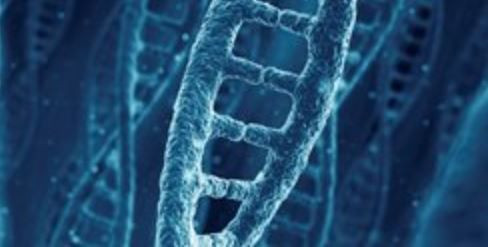'Junk DNA' Genetic Malfunction Promotes Cancerous Tumor Growth

"Junk DNA" makes up about 98 percent of the human genome, an enormous accumulation of repetitive sequences that is not believed to include any genes that encode proteins for specific functions.
Its purpose, if any, is still poorly understood, but researchers at the University of Nottingham in England have found that at least one genetic malfunction in a sequence considered junk DNA has a dire and specific effect: promoting cancer growth.
Led by Dr. Cristina Tufarelli, the researchers examined chimeric transcripts, or mistakenly rearranged DNA, in genetic sequences called LINE-1 (L1), which are often considered junk DNA.
They found that in breast and colon cancer cells, a specific genetic malfunction called LINE-1 chimeric transcript 13 (LCT13) occurred near a tumor-suppressing gene called TFPI-2. The LCT13 mutation was associated with turning off the TFPI-2 gene, which typically produces proteins that help prevent the metastasis of cancer cells and growth of tumors.
In a previous study, Tufarelli's team found that chimeric transcripts in L1 DNA sequences, like LCT13, can help diagnose cancerous tumors as well as actively promote cancer growth.
In this study, published online last week in the freely accessible journal Nucleic Acid Research, they suggest that the LCT13 genetic malfunction might trigger cancer growth by silencing TFPI-2.
The findings hint that changes in so-called junk DNA can have dangerous effects.
"This study has identified a novel way in which 'junk DNA' can interfere with the normal functioning of a cell," said Tufarelli in a news release.
Recent studies have been conflicted about the role that sequences of junk DNA might play. While one high-profile study found that as much as 80 percent of non-coding human DNA showed biochemical activity, the effects of such activity were unclear. Another study suggests that "enhancers" in junk DNA can modify the functions of genes throughout development.
Research on the carnivorous bladderwort plant revealed that its genome is remarkably free of junk DNA, suggesting that purging noncoding DNA does not necessarily hinder complex functions.
"The next step will be to understand how these elements become switched on," said Tufarelli. "This information will be important in the design of treatments aimed to prevent activation of these elements and cancer progression."
Source: Cruickshanks HA, Vafadar-Isfahani N, Dunican D S, et al. Expression of a large LINE-1-driven antisense RNA is linked to epigenetic silencing of the metastasis suppressor gene TFPI-2 in cancer. Nucleic Acids Research. 2013.



























